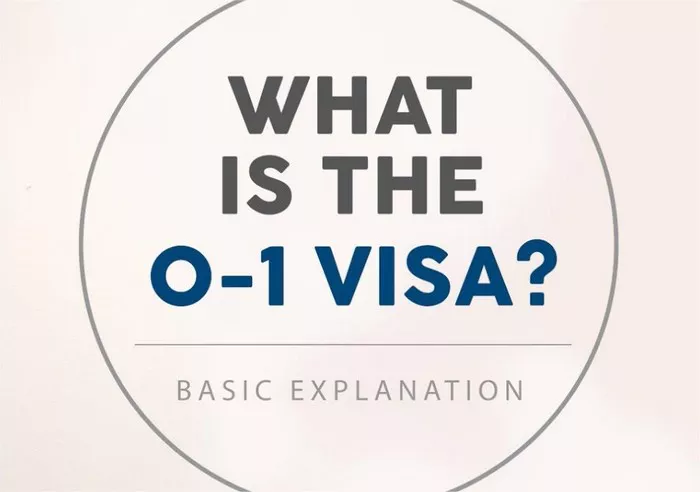In an increasingly globalized world, talent knows no boundaries. The United States, as a hub for innovation and creativity, attracts exceptional individuals from around the globe. Among the various visas available for foreign nationals to work in the U.S., the O-1 visa stands out as a pathway for individuals with extraordinary abilities or achievements in their respective fields. This article aims to provide a comprehensive understanding of the U.S. O-1 visa, its eligibility criteria, application process, and benefits.
What is the U.S. O-1 Visa?
The U.S. O-1 visa is a non-immigrant visa category designed for individuals with extraordinary abilities or achievements in fields such as the sciences, arts, education, business, or athletics. It is divided into two subcategories: the O-1A visa for individuals with extraordinary abilities in sciences, education, business, or athletics, and the O-1B visa for individuals with extraordinary abilities in the arts or extraordinary achievement in the motion picture or television industry.
Eligibility Criteria
To qualify for an O-1 visa, an applicant must demonstrate extraordinary ability or achievement in their field through sustained national or international acclaim. The U.S. Citizenship and Immigration Services (USCIS) evaluates eligibility based on specific criteria tailored to each field. Generally, these criteria include:
1. O-1A Visa (Sciences, Education, Business, or Athletics):
Receipt of a major internationally recognized award, such as the Nobel Prize.
Membership in associations that require outstanding achievements.
Published material about the applicant’s work in professional or major trade publications or other major media.
Original scientific, scholarly, or business-related contributions of major significance.
Authorship of scholarly articles or books in the field.
2. O-1B Visa (Arts or Motion Picture/Television Industry):
Leading or starring in productions or events with a distinguished reputation.
Critical acclaim or recognition from experts in the field.
Evidence of commercial success in the performing arts.
High salary or other substantial remuneration for services in relation to others in the field.
Application Process
The process of obtaining an O-1 visa involves several steps, including:
1. Finding a U.S. Sponsor: The applicant must have a U.S.-based employer, agent, or representative who will sponsor their O-1 visa petition.
2. Collecting Evidence: The applicant gathers evidence to demonstrate their extraordinary abilities or achievements in their field. This may include awards, publications, media coverage, letters of recommendation, and other relevant documentation.
3. Filing the Petition: The sponsor submits Form I-129, Petition for a Nonimmigrant Worker, to the USCIS along with supporting documents.
4. Adjudication: The USCIS reviews the petition and supporting evidence to determine the applicant’s eligibility for the O-1 visa.
5. Consular Processing or Change of Status: If the petition is approved, the applicant may either apply for an O-1 visa at a U.S. consulate abroad or request a change of status if they are already in the U.S. on a different visa.
6. Entering the U.S.: Upon approval of the visa or change of status, the applicant may enter the U.S. to work in their field of expertise.
Benefits of the O-1 Visa
The U.S. O-1 visa offers several benefits to individuals with extraordinary abilities or achievements:
1. Work Authorization: Holders of the O-1 visa are authorized to work in the U.S. for the sponsoring employer in their specialized field.
2. Flexibility: The O-1 visa allows for flexibility in employment, as the visa is tied to the specific employer who sponsored the petition rather than a particular job position.
3. Family Accompaniment: O-1 visa holders may be accompanied by their spouse and children under the age of 21, who may apply for O-3 visas to accompany the primary visa holder to the U.S.
4. Path to Permanent Residency: While the O-1 visa is a non-immigrant visa, it can serve as a stepping stone to permanent residency (green card) for individuals who wish to remain in the U.S. permanently.
5. No Annual Cap: Unlike some other visa categories, such as the H-1B visa, there is no annual cap on the number of O-1 visas that can be issued, providing greater opportunities for qualified individuals to work in the U.S.
Challenges and Considerations
While the U.S. O-1 visa offers numerous benefits, there are also challenges and considerations to keep in mind:
1. Stringent Criteria: The eligibility criteria for the O-1 visa are stringent and require substantial evidence of extraordinary abilities or achievements, which may pose a challenge for some applicants.
2. Documentation Requirements: Gathering the necessary documentation to support the O-1 visa petition can be time-consuming and complex, requiring careful preparation and organization.
3. Competitive Process: The O-1 visa application process is competitive, especially in fields where there is high demand for talent. Applicants may face competition from other highly qualified individuals.
4. Maintenance of Status: O-1 visa holders must maintain their status by continuing to work in their specialized field for the sponsoring employer and complying with all visa requirements.
5. Dependents’ Employment Restrictions: While O-3 visa holders (dependents of O-1 visa holders) may accompany the primary visa holder to the U.S., they are not authorized to work in the U.S. unless they obtain separate work authorization.
Conclusion
The U.S. O-1 visa serves as a vital pathway for individuals with extraordinary abilities or achievements to live and work in the United States. By attracting top talent from around the world, the O-1 visa contributes to the diversity and innovation that drive the U.S. economy forward. While obtaining an O-1 visa may present challenges, the potential rewards for those who qualify are substantial, offering opportunities for professional growth, cultural exchange, and the pursuit of excellence on a global stage.


